Repressions in the defense industry of the USSR
From the author: this article is an attempt to understand a little stories pre-war repression in the defense industry of the USSR. Even today, when the secret service archives are partially open, this topic lies in a large, almost untouched layer. Information is very scarce and it is not easy to collect it, so I immediately warn you - accurate statistics on the scale of repression in the defense industry and their impact on the production of military equipment and equipment. weapons there is no. There is enough fragmentary data and a general, but far from complete picture. Therefore, each reader has the full right to evaluate the collected facts to the best of their own understanding.
Background of mass repressions in the USSR
At the end of 20's In the USSR, forced industrialization began. Funds for its implementation came from the sale of requisitioned church and museum valuables, as well as the sale of grain, which was forcibly requisitioned from the peasants. In order to simplify the removal of grain, 2 large-scale actions were carried out in agriculture: dispossession of kulaks and collectivization. It was not necessary to select grain from collective farmers, because it was already collective farm. Naturally, there was still not enough money for industrialization - there was no developed banking system, there was no private investment. The working class also had a hard time: with little material incentives, active intensification of the labor process began. As a result of renewal in 1927-1929. collective agreements, tariff reform, revision of the norms of development, equalization is strengthened, wages are reduced for certain categories of workers. As a result, many party organizations have noted "political tensions among the masses." The growing dissatisfaction of the workers - an inevitable consequence of the "policy of tightening the belts" - the party-state leadership has directed towards the so-called "pest specialists", as a rule, from the "former". The role of the first lightning rod was played by the widely propagandized Shakhty process 1928. According to him, engineers and technicians of the Donets Basin were accused of allegedly “conscious sabotage”, organizing explosions in mines, criminal ties with former owners of Donetsk mines, purchasing unnecessary imported equipment, violating safety regulations, labor laws and more. dd
According to the prosecution, the wrecking organizations of Donbass were funded by "Western capitalists." Meetings of the Special Court Presence of the USSR Supreme Court on the “Shakhty Case” were held in the summer of 1928 in Moscow, chaired by A. Ya. Vyshinsky. The court acquitted four of the 53 defendants, four defined suspended sentences, nine people - to imprisonment for a period of one to three years. Most of the defendants were sentenced to long-term imprisonment - from four to ten years, 11 people were sentenced to death (five of them were shot, and six USSR Central Election Commissions mitigated the penalty). The Shakhty affair was discussed at two plenary meetings of the Central Committee of the party. “The so-called Shakhty affair cannot be considered an accident,” Stalin said in a speech at the Central Committee plenum in April 1929. “Shakhtyntsy” are now seated in all branches of our industry. Many of them have been fished, but far from all have been fished. Wrecking the bourgeois intelligentsia is one of the most dangerous forms of resistance against developing socialism. Wrecking is all the more dangerous because it is connected with international capital. Bourgeois sabotage is an undoubted indicator that the capitalist elements have not yet laid down their arms, that they are gathering strength for new actions against Soviet power. "
The concept of “Shakhtyntsy” became a nominal synonym for “sabotage” in Soviet society and gave rise to a long propaganda campaign. The massive publication of materials about “sabotage” in the Donbass caused an emotional storm in the country. The collectives demanded the immediate convening of meetings, the organization of meetings. At meetings, the workers spoke in favor of increasing the attention of the administration to the needs of production, for strengthening the protection of enterprises. From the reports of the OGPU in Leningrad: “Workers are now thoroughly discussing every non-adjustment in production, suspecting malicious intent; The following words are often heard: “Is Donbas the second?” Finally, there were “specific culprits” of the creative ugliness: weak organization, backward planning, low wages, delays in salary payments, lower rates, mass accidents, equipment violations safety and injury, disrupting the implementation of production plans.
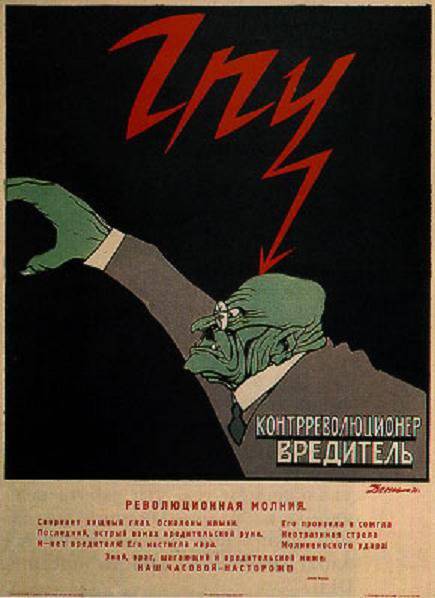
In Moscow at the factory "Trekhgornaya manufactory" workers said:
“The party has too much confidence in the specialists, and they began to dictate to us. They pretend to help us in their work, but in fact they are conducting a counter-revolution. ” And here are the characteristic statements recorded at the Red October factory in the Nizhny Novgorod province: “They gave the specialists will, privileges, apartments, an enormous salary; live like in the old time. " In many groups there were calls for the harsh punishment of "criminals." The assembly of workers in the Sokolniki district of Moscow demanded: “Everyone should be shot, otherwise there will be no rest.” On Perovskaya Sudobaz: "You must shoot this scum with bundles."
Playing on the worst instincts of the masses, the regime inspired a number of repressive processes against the "experts" accused of "sabotage" and other deadly sins. One thing followed another: the process of the Labor Peasant Party (TCH), arrested prominent economists N. D. Kondratiev, A. V. Chayanov, L. N. Yurovsky, the most prominent agronomist scientist A. G. Doyarenko, and others. In the autumn of 1930, it was announced that the OGPU would uncover a sabotage and espionage organization in the field of supplying the population with essential foodstuffs, especially meat, fish and vegetables. According to the OGPU, the organization was headed by a former landowner - Professor A. V. Ryazantsev and a former landowner E. S. Karatygin, as well as other former nobles and industrialists, cadets and Mensheviks, who “sneaked” into responsible posts in the Supreme Economic Council, in the People's Commissariat of Trade, in Soyuzmyaso , in Soyuzryba, in Soyuzplodovosch, etc. As it was reported in the press, these “pests” managed to upset the food supply system of many cities and workers' settlements, to organize famine in a number of regions of the country, they were blamed for the increase in prices for meat and meat processing products, etc. Unlike other similar processes, the verdict in this case was extremely harsh; all the people involved in 46 were shot by order of a closed court. Now it should be clear to the Soviet people why there are not even elementary products in the shops - they were not delivered by “pests”. November 25 - December 7 1930g. The process of a group of prominent technical specialists accused of sabotage and counterrevolutionary activities took place in Moscow: the Industrial Party process. Eight people were brought to trial on charges of sabotage and espionage: L. K. Ramzin - Director of the Thermal Engineering Institute, the world's leading expert in the field of heating engineering and boiler building, and also prominent experts in the field of technical sciences and planning: V.A. Larichev, I.A. Kalinnikov, I.F. Charnovskiy, A.A. Fedotov, S.V.Kupriyanov, V.I.Ochkin, K.V.Sitnin and others.
Repression in the defense industry
In the course of mass repressions of 20-30-i, the designers of weapons and military equipment, leading and ordinary defense industry workers suffered a lot. The situation prevailing in the Soviet production in 30-e years, consider the example of the largest defense plant "New Sormovo" (plant number XXUMX), producing artillery guns. Mechanical test logs for 112-1934. show a chronically low level of product quality. On tests of various parts of the F-1935 gun (casing, pipes, etc.) on average 22% of the heats were not considered to be inconsistent with the quality parameters. According to machine shop # 42 statistics for 1, in January there were 1935 serious machine crashes, in February - 13, in March - 7, in April - 13, in May - 16, in June - 12. In 21 in the machine shop No. 1938, equipment downtime due to various accidents accounted for 1% of work time. 25 June hammer # 20 failed, June 6334 - hammer №27. Electric motors were regularly destroyed, furnaces failed. In May 6338g. 1938 fires occurred in the thermal workshop, and 4 of them caused the furnace to explode. New plant director Mirzakhanov order on the plant from 1 May 19. explained it in the spirit of the times:
“The enemies of the people who are operating in our enterprise practice using fires and explosions to incapacitate the shop and the plant as a whole. Undelivered pests at the plant and now are trying to do their vile work. 9 May - a fire in the workshop №6, on the same day, a foreman Chinyaev blew up the furnace, 17 May - 2 fire. "
Speaking “and now”, Mirzakhanov had in mind that the campaign to arrest “pests” and “enemies of the people” was actively going on since the summer of 1937. (and there were still large “landings” up to 1937), but now, they say, it is clear that they have not been overfished and that arrests should be continued. In fact, the accident was a direct result of equipment overload, chronic assault, low production culture and a shortage of qualified personnel. In another order from 3 November 1938. the director raised the problem of marriage:
“... This item comes with a big marriage: the whole 1937g. - 88%, June 1938 - 68%, July - 70%, August - 82% ... "
By decree of the Supreme Soviet of the USSR on February 5 1939. the plant was awarded the Order of Lenin, the plant management received personal congratulations from the People's Commissar of Weapons Mikhail Kaganovich and the head of the Red Army Academy of Public Administration Grigory Kulik. However, in reality, the achievements of the plant were very doubtful: with 1935g. the enterprise mastered the release of the F-22 gun and by the beginning of 1939. managed to put in the troops of all 1429 units. And the quality was low and many guns had to be redone under warranty. Director Radchenko and Dunaev, who were previous to Mirzakhanov, were arrested and sentenced to long terms of imprisonment, but Mirzakhanov, despite the lack of real progress, apparently managed to establish the necessary relations with high authorities. However, the patrons of Mirzakhanov ended their lives not in the best way: M. Kaganovich soon shot himself, and G. Kulik was shot after the war.
An interesting document of the era - an excerpt from the protocol of the party assembly in the turbine workshop of the Kirov plant in Leningrad:
the general party assembly of members and candidates of the VKP (b) turbine workshop of the Kirov Plant from 8 in October 1937.
Present: 143 people.
Chairman: Zinger. Secretary: Kolyshkin.
AGENDA:
1. Party committee report (secretary s / c. SMIRNOV)
2. Miscellanea.
HEARD:
Report of the secretary of the party committee so SMIRNOVA who said that the election of the party committee depends on the members and candidates of the CPSU (b). The party committee began its work in June of this year. During this time, work has been done to change the composition of the organization.
Retired from the organization, excluding the excluded: 5 people. Took: 3 people. Translated from candidates: 5 people. Excluded: 18 people.
Individual party members were excluded only by the decision of the party committee.
BORN was expelled because he was associated with the enemy of the people of ROOTLES, who was connected with the enemy of MARKOVSKY, for the loss of class vigilance. Myslitsky was expelled from the party and is now taken by N.K.V.D. NEKRASOVU learned political. Distrust. PREY expelled for the fact that he contributed to the transition, for political distrust expelled him from the party. FUNIKOVA wife, working in the SKB, engaged in counter-revolutionary talk, went and attended a Polish church. Funikov did not understand this, for his insincerity before the party he was expelled. They expelled IOSELEV from the party because he was closely associated with KOZDROE. Dukmasov was expelled because he broke away from party life (did not attend meetings). KAPUSTIN was expelled from the party because the situation on the cold rolling was not entirely satisfactory. The blades are not resistant, reduces by 20%. They swatted out with exposing enemies with party cards: TRUSKOVSKY, KAMASHIN are attracted by 58 Art. Like spies. KAZAKEVICH was expelled during the exchange of a membership card for being abroad, had a connection with one teacher and had a correspondence with her. Deciding on the exclusion of the party committee did the right thing ... "
Cited in the book “RUSSIA, XX CENTURY. DOCUMENTS. LUBYANKA. STALIN AND THE MAIN DEPARTMENT OF STATE SECURITY OF THE NKVD IN 1937-1938. ”Compiled by:
V.N. Khaustov, V.P. Naumov, N.S. Plotnikova
MOSCOW, 2004.
There were a lot of problems, because in fact the industry after the devastating effects of the revolution and the Civil War had to be created anew. Lacked everything, but especially-literate professionals. But where to get money for the mass purchase of modern equipment, training, research and development, decent wages of necessary specialists? It was for the first time that the idea of organizing free labor of technical specialists in prison came to mind - now it is difficult to say, it’s just clear that the decision was made at the very top. The first to fall under the rink of the repressive system were those who had "non-proletarian" origins and suspicious fad in their biography. One of the first victims was D. P. Grigorovich, the founder of seaplane construction in Russia.
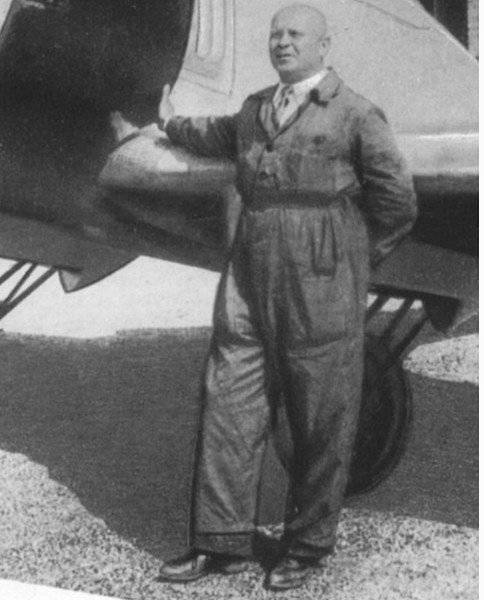
He was arrested in his office on September 1, 1928 on charges of sabotage and sent to Butyrka prison. Soon there were the employees of Grigorovich's design department for seaplanes V. L. Korvin-Kerber, E. I. Majoranov, A. N. Sedelnikov, aviation specialists of other organizations - P. M. Kreyson, B. F. Goncharov, I. M. Kostkin, A. V. Nadashkevich, N. G. Mikhelson. October 25, 1929 was arrested aircraft designer N. N. Polikarpov (son of a priest).
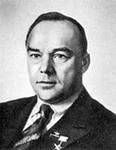
He was charged with participating in a counter-revolutionary wrecking organization and, like other comrades in misfortune, was put in Butyrka. Based on the OGPU group of Grigorovich-Polikarpov in December 1929. in the Butyrskaya prison, the first in the USSR created the so-called "sharashka" - the prison design bureau, which was officially called as follows: Design Bureau - internal prison (KB-VT). Convicted engineers and designers worked in it under the protection and guidance of the staff of the OGPU. Since the prison conditions were of little use for productive design work, this "sharashka" was transferred to the territory of the Khodynsky airfield and renamed the OGPU TsKB-39. Grigorovich was appointed chief designer, and Polikarpov became his deputy.
From the history of the organization of the "sharachechnogo" labor of the NKVD:
In 1930, the Technical Department of the EKU OGPU was organized, supervising the work of special design bureaus, using the work of imprisoned specialists. The head of the EGSU of the OGPU (1930 — 1936) —L. G. Mironov (Kagan) —commissioner of state security 2 of rank. In 1931 — 1936, the numbers of the 5, 8, 11, and 7 branches of the EGS of the OGPU of the USSR were sequentially assigned to the Technical Department for conspiracy. In September, 1938 was organized by the Special Design Bureau of the NKVD of the USSR (order of the NKVD No 00641 from 29 September 1938) .21 October 1938 in accordance with the order of the NKVD No 00698, this division received the name “4-th special department”. 10 January 1939 was transformed by the order of the NKVD No 0021 into the Special Technical Bureau (OTB) of the USSR People's Commissar of Internal Affairs for the use of prisoners with special technical knowledge. The 4 special department of the NKVD-Ministry of Internal Affairs of the USSR was organized in July 1941 on the basis of the Special Technical Bureau (OTB) of the NKVD of the USSR and the 4 department of the former NKGB of the USSR. The head of the department is V. A. Kravchenko. From 1945, the special department also used German specialist prisoners of war. In 1949, a new order was issued by the Ministry of Internal Affairs of the USSR No 001020 from 9 in November 1949. The 4-th special department of the Ministry of Internal Affairs was entrusted with the organization of “Special technical, design and design bureaus for research, experimental, experimental and design work on the topics of the General Directorate Ministry of Internal Affairs of the USSR. After the death of Stalin (1953 g.) "Sharashki" were eliminated.
In March, 1930. Alksnis, head of the Red Army Air Force (shot in 1938), set a task for TsKB-39: to create a light world-class fighter in a month. The prisoners worked, paraphrasing the well-known saying, not for conscience, but for fear, because many were sentenced not only to long terms of imprisonment, and some had delayed death sentences. Task completed: 27 April 1930g. I-5 aircraft rolled out of the shop.
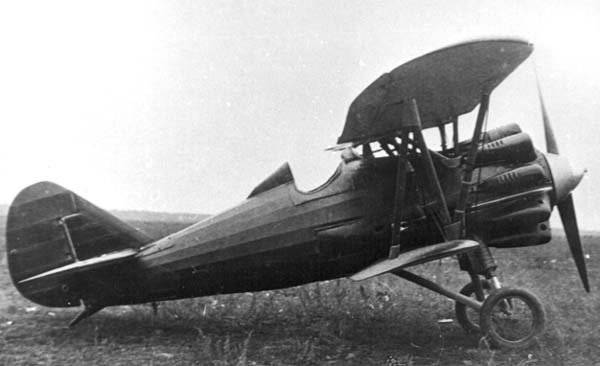
The fighter turned out to be good, it was decided to mass-produce, and in the future about 800 machines were built.
The “leaders”, inspired by this success, were significantly integrated and were renamed TsKB-39 as TsKB, which was organizationally part of the Technical Department of the OGPU Economic Department. This management supervised the objects erected by the labor of prisoners. At the disposal of TsKB fully given aircraft factory-39. Now the Central Design Bureau was instructed to create a whole series of aircraft: the fighter, attack aircraft and others, but this time the hopes were not justified - the cars built during the year turned out to be of poor quality. The work of the Central Clinical Hospital stalled, some of the specialists were amnestied and released, others continued to serve the old deadlines or received new ones. The attempt to create powerful aircraft engines in the OKB, the Special Design Bureau of the OGPU, which operated on Nikolskaya Street in Moscow, ended in failure. Prominent engine specialists worked there - prisoners A.A.Bessonov, N.R. Brilling, B.S.Stechkin.
However, the idea of technical specialists' slave labor did not die. When the country in 1937-1938gg. a wave of mass condemnations of “enemies of the people” swept, in the village of Bolshevo near Moscow, the NKVD created an entire “scientific-sorting” camp for convicted designers and engineers. They were sought out in camps and prisons, and the survivors were sent to this camp; from there, part of the prisoners (s / c) were eventually transported to separate NKVD design bureaus. Almost the entire elite of the Soviet aircraft industry passed through Bolshevo: aircraft designers R.L.Bartini, V.M.Myasishchev, N.I.Bazenkov, D.P. Grigorovich, IG.Neman, N.N.Polikarpov, V.M. Petlyakov, A.I. Putilov, A.N.Tupolev, V.A. Chizhevsky, A.M. Cheremukhin, D.S. Makarov. In the same place, the designers of the rocket technology, SP Korolyov, Yu.V. Kondratyuk, and VP Glushko, "sat" and worked; experts on submarines - a group of Kassatsner and Dmitrievsky, specialists on torpedo boats - a group of Brzezinski, on artillery weapons and ammunition - a group of Berkalov. Later, the largest representatives of world-class fundamental science were delivered there: mathematician K. Szilard, professor of physics Yu. B. Rumer, specialist in mechanics, corresponding member of the USSR Academy of Sciences A.I. Nekrasov. By the miracle of Sergei Pavlovich Korolev, who did not die during the year of his stay in the Kolyma camps, was taken to Bolshevo in 1940.
A.N. Tupolev was brought to Sharashka from Butyrskaya prison in April 1939 with a “luxurious” bouquet of accusations: participation in an anti-Soviet, Trotskyist, sabotage organization, work on French and American intelligence, etc., etc.
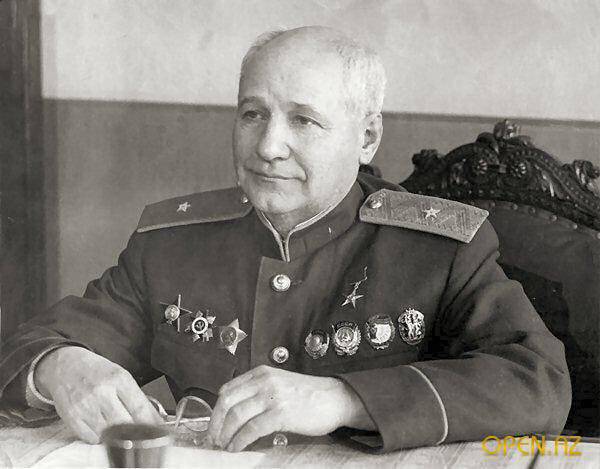
Andrei Nikolayevich, like the overwhelming majority of prisoners, was forced to sign everything that the jailers demanded of him, but when he was offered a job in the sharashka instead of the camp, he put forward the only condition: he only agreed to work in the prison design bureau if he received a note from his wife, in which it will be said that she is not arrested, she lives at home and the children are with her. Tupolev was not worried for a reason, his wife was really arrested by that time, but the great designer was painfully important for the country and everyone understood that. Tupolev's “impudent” demand was satisfied: his wife was released and he received a note from her. Later, Tupolev's daughter recalled:
Under the leadership of a prisoner Tupolev, the NKVD created a powerful design bureau called the NKVD TsKB-29, it was there that the dive bombers PE-2 (in 1940) and Tu-2 (in 1941) were created. This institution was located at the address: Moscow, Radio St., 24 - there used to be Tupolev Design Bureau and its production base (156 factory).
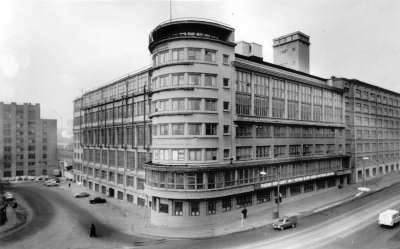
All work was carried out under the personal supervision of Beria, who headed the NKVD after Yezhov, and at first Beria even tried to set technical tasks for aircraft design to the heads of design bureaus. Tupolev’s story about one such story was reproduced in his memoirs Tupolevskaya Sharaga by L. L. Kerber (one of the prominent authorities in the field of radio communications, who worked at OKB-29 under Tupolev’s guidance):
Addressing Davydov (NKVD employee):
“Take measures that in a month they are,” follows a nod in the direction of the prisoner of Tupolev, “prepared proposals.” Everything!"
Further Kerber describes that Tupolev returned angry, Beria’s idea was obviously untenable, technically completely amateurish. How can you swoop down on a point target on a heavy, hulking four-engined plane !? He told about his task from Beria to his closest assistants, and said that making such a machine was insane. And if you refuse - shooting, new term? A month later, Tupolev was again taken to Beria to the Lubyanka. When he returned to KB, he said the following:
- My report caused irritation in Beria. When I finished, he looked at me frankly angry. Apparently, about PB-4 he spoke to Stalin quite a lot, and maybe he convinced him. It surprised me, from Stalin’s previous methods I had the impression that if he didn’t understand aviation as a designer, he still had common sense and point of view. Beria said that they would figure it out with Stalin. The day I was worried about being alone, then was called again. Beria: "So, we with Comrade Stalin once again got acquainted with the materials. The solution is this: now and immediately do a twin-engine. Once you’re done, proceed to PB-4, we really need it.
Then we had the following dialogue:
Beria: - What is the speed?
Me: - 600.
Beria: - Not enough, seven hundred! What is the range?
Me: - 2000.
Beria: - It does not work, you need 3000! What is the load?
Me: - 3 tons.
Beria: - Not enough, you need 4. Everything!
Addressing the NKVD officer:
- Order the military to draw up requirements for a twin-engine dive bomber, specify the parameters in the spirit of my instructions.
A total of about 29, hundreds of “pest” designers, and about “free” designers around 2, worked at TsKB-1000. It was probably the largest aircraft design team in the world. Paradoxically, all the departments were headed by “pests”, among whom there were quite a few academicians, corresponding members and doctors of science. And it does not sound silly, but they were all led by the colonel of the NKVD, Kutepov, who for several years called Nazal an electrician at the 39 aircraft factory. He was required to authorize any work. L. Kerber in his memoirs describes the case when designers came to Kutepov for permission to create an 4-stroke engine. Kutepov asked - what was the engine before? Those answered that supposedly 2-tact. Then Kutepov advised them to “not rush” and try to create a “3-tact” first. After this incident, the nickname “Three-stroke” was firmly attached to Kutepov.
Kerber writes about the denunciation system in the sharashka:
At the same time, TsKB-29 worked on several types of aircraft. The department under the number 100, which was headed by V. M. Petlyakov according to the technical task, designed the 2-motorized altitude fighter.
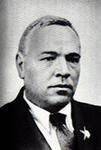
His project was finished in April 1940, and, after consulting with the military, was ordered to be converted into a diving bomber. To strengthen and accelerate, Petlyakov was assigned about 300 "free" specialists from the design bureau of A.S. Yakovlev, V.M. Ilyushin and the former design bureau of Tupolev, which was now headed by A.A. Arkhangelsky. In the fall, the famous PE-2 went into series - around 11000 machines were released.
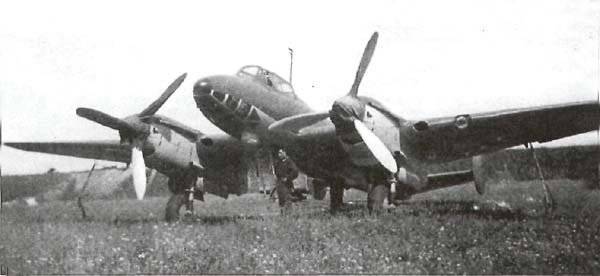
The 102 department, headed by Myasishchev, worked on the creation of a long-range high-altitude bomber under the code name "102" (DVB-102). In the spring, the 1942 plane took off and, with many technical solutions, could compete with the famous American “flying fortresses”. However, the engines with the necessary characteristics to create it and could not, and the aircraft in the series did not go.
The department of 103 Tupolev (the most numerous) after the cancellation of the task for the 4-motor dive-bomber worked on the creation of a light diving bomber, that is, he created a machine similar to PE-2. The plane turned out good, the first flight took place at the beginning of 1941, and was launched into a series under the name of TU-2. He was in service with the Air Force until XNUMHg.
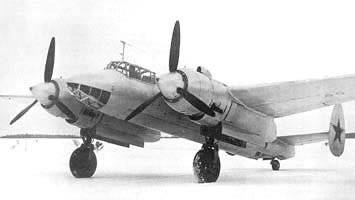
The 110 department of Tomashevich did the fighter. He ended up unsuccessful because of too much weight, and did not go into the series.
A large prison design bureau for the development of aircraft engines was organized by the NKVD in Tushino, near Moscow, on the basis of the 82 engine-building plant. Among the prisoners were:
- the largest specialist in the industry, one of the founders of the Central Institute of Aviation Motors (CIAM), the creator of a number of powerful aviation and tank motors Alexey Dmitrievich Charomsky;
- Boris Sergeevich Stechkin, an outstanding specialist in the theory and practice of motor-building, who also worked on the Ilya Muromets aircraft in the Russian Empire (“sat” 2 times during Soviet power - in 1930-1931gg and in 1937-1943gg).
- the largest specialist in the field of jet engines Valentin Pavlovich Glushko, the future general designer of NPO Energia and Twice Hero of Social Work;
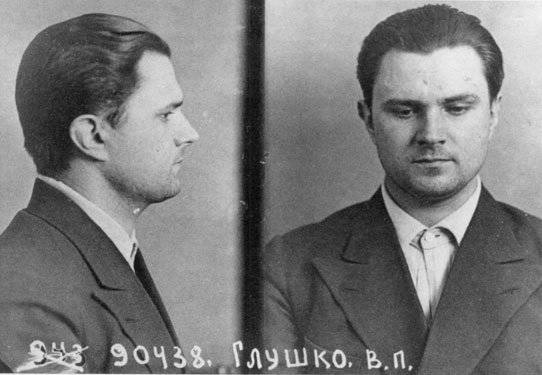
- a prominent metallurgist, founder of Soviet duralumin, Professor I.I. Sidorin;
as well as the main designers of engine-building factories A.M.Dobrovolsky, M.A.Kolosov, A.S.Nazarov. When the war began, this “Sharaga” moved to Kazan on the territory of the 16 aircraft factory. Later there they transferred S.P.Korolyov, who, together with Glushko, worked on the creation of an aviation jet accelerator. In general, the activity of this “sharaga” was successful, as evidenced by the archival document - a letter to Beria to Stalin from 16.07.1944:
1. According to the project, V. P. Glushko built RD – 1 experimental jet-liquid engines designed for installation on aircraft as accelerators. Prototypes of engines RD – 1 passed factory flight and joint bench tests with satisfactory results. At present, an experimental series of RD – 16 jet engines is being manufactured at plant No. 1 to test all issues related to the use and further development of these engines.
2. According to the project of Dobrotvorsky A. M., on the basis of the pairing of two M-105 serial engines, powerful aircraft engines MB-100 with a take-off power of 2200 l were built. with. and MB – 102 with a take-off power of 2450 l. with.
Currently, the MB – 100 engines are undergoing flight tests on the EP – 2 aircraft and the MB – 102 engines are prepared for installation on the “102” aircraft.
In addition to these works, 4 Special Department Specialists of the NKVD of the USSR provided extensive technical assistance to 16 Plant during the construction and installation of this plant, in particular, under the project and under the guidance of 4 Specialists of the NKVD USSR Special Plant, 16 built an experimental mechanical aircraft engine base.
A group of qualified 4 specialists from the Special Department of the NKVD of the USSR, working at this plant in senior technical positions, largely contributed to the plant's successful production.
According to the reviews of the Narkomaviaproma tov.Shakhurin, the work carried out by the imprisoned 4 specialists of the Special Department of the NKVD of the USSR, according to the technical novelty and successful solution of a number of complex technical and design problems, are very valuable.
Considering the importance of the work done, the NKVD of the USSR considers it appropriate to release the convicted specialists who had distinguished themselves with the conviction, and then send them to work in the aviation industry. ”
(The State Archives of the Russian Federation - GARF. Stalin’s special folder. D.65.)
"Sharashki" NKVD in Leningrad:
- Separate design bureau OKB-12 (1931-1932), was placed in the preliminary detention center, specialized in architectural and design works: the project of the Big House, reconstruction of the OGPU garage on Manezhnaya Square, etc., the authors of the projects are prisoners N. E. Lancere , B. K. Roerich and others;
- The NKVD Directorate OKB in the Leningrad Region (from 1942. OKB-172) in the building of the 'Crosses' prison, specialized in the development of artillery: 130-mm 2-gun turret B-2-LM; The X-NUMX-mm anti-tank gun M-45 and others worked as prisoners: design engineer S. I. Lodkin, professor V. R. Bursian, professor A. M. Zhuravsky, professor I. V. Tokov and others;
- OKB-5 Shipyard of the NKVD Maritime Security (1933-1940, Uralskaya Street, 19; now the Almaz Marine Plant), worked: Dr.E.E. E. Papmel, design engineer V. L. Brodsky and others;
- Special technical bureau of the Leningrad branch of the Giproniislyuda Institute of the USSR Ministry of Internal Affairs (1953-1955, v. Metallostroy), worked as prisoners engineers: V. K. Akulov, R. Ya. Kolberg, etc .; - OKB-196 (construction of submarines; now TsDB 'Rubin'); P. G. Goinkis, P. Yu. Oras and other engineers worked as constructors;
- OKB at the Kirov factory (coastal artillery); Candidates of technical sciences V.N. Yavorskyy, M.M. Morduhovich and others worked.
Not all arrested defense scientists and technicians were lucky to get into the sharashki. From 1937 were shot: Nikolai Mikhailovich Kharlamov, head of TsAGI; Vasily Ivanovich Chekalov, Head of the 8 Division of TsAGI; Yevgeny Mikhailovich Furmanov, deputy head of the training department at TsAGI; Kirill Alexandrovich Inyushin, deputy head of the planning and technical department of the plant number 156; Israel Emmanuilovich Maryamov, plant manager No. 24; Georgy Nikitovich Korolev, Plant Director No. 26; Andrei Makarovich Metlo, Head of the 2 Division of the 1 Division of the NCPA, and many others ...
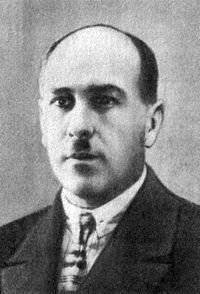
By May 1926, the K-2 sanitary project was developed at Kalinin Design Bureau. A more sophisticated K-3 was built in the 1927 year. In July, the sanitary-passenger K-1928 took off 4. At the Berlin International Exhibition in October 1928 of the year, K-4 received a gold medal and the team of the KhAZ began the serial production of the aircraft. Soon, the K-5 takes off, incorporating all the best of its predecessors. In August, the X-NUMX of the year was built K-1930 (postal or bomber), K-6, sports and communications K-8, tailless bomber K-10. The heavy bomber K-12 was a real "flying fortress", which appeared nine years earlier than the American "Boeing" B-7. Defensive armament: 17 guns caliber 8 mm, 20 machine guns caliber 8 mm), bomb load 7,62 tons; instead of bombs, the plane could take paratroopers on board the 16. Konstantin Alekseevich Kalinin was shot in October 112, seven months after his arrest.
Part II
Information